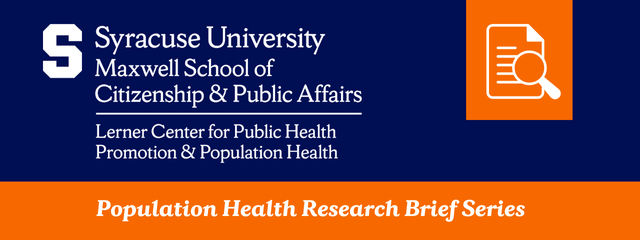Description/Abstract
Paid sick leave is good for health, yet there is no federal paid sick leave mandate, and U.S. states are increasingly preempting their city and county governments from mandating employer paid sick leave. This brief describes how working-age (ages 25-64) mortality rates from several external causes of premature death (suicide, homicide, drug overdose, alcohol poisoning, and transport accidents) from 1999 to 2019 may have been lower if states had not preempted cities and counties from mandating paid sick leave. The authors find that working-age mortality rates could have been over 7.5% lower in 2019 in cities and counties that were constrained by preemption laws if they had been able to mandate a 40-hour annual paid sick leave. The consequences of preemption laws are profound. They stymie local government innovation, constrain opportunities to take time off from work for medical care without financial repercussions, elevate risks of death among working-age adults, and contribute to geographic disparities in mortality.
Document Type
Research Brief
Keywords
Paid Sick Leave, Population Health, Health Policy
Disciplines
Health Policy | Social and Behavioral Sciences | Sociology
Date
8-30-2022
For More Information
Language
English
Acknowledgements
Support for this research was provided by the Robert Wood Johnson Foundation’s (RWJF) Policies for Action program, through grant number 76103 and from the Center for Aging and Policy Studies, which receives center core funding from the National Institute on Aging (NIA P30AG66583). The views expressed here do not necessarily reflect the views of RWJF or NIA.
Funder(s)
Robert Wood Johnson Foundation, National Institute on Aging
Funding ID
76103 (RWJ), National Institute on Aging (NIA P30AG66583)
Recommended Citation
Wolf, Douglas A.; Karas Montez, Jennifer; and Monnat, Shannon M., "Allowing Cities to Mandate Employer Paid Sick Leave Could Reduce Deaths among Working-Age Adults" (2022). Population Health Research Brief Series. 191.
https://surface.syr.edu/lerner/191
Creative Commons License

This work is licensed under a Creative Commons Attribution 4.0 International License.



